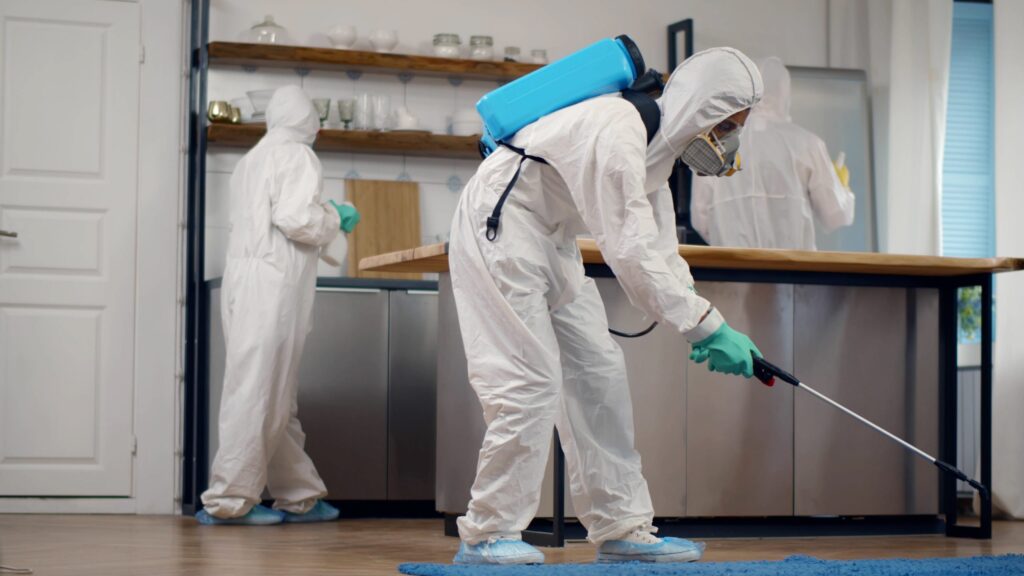
Welcome to the ultimate guide on effective pest control methods for Indian homes! Dealing with pests can be a common challenge, but fret not this comprehensive guide is here to make your home a pest-free haven. In the diverse landscape of India, ranging from bustling cities to serene villages, various pests can find their way into our homes, causing inconvenience and health concerns. From the notorious mosquitoes to sneaky cockroaches and persistent rodents, we understand the need for practical and accessible solutions. In this guide, we will explore a wide array of pest control methods tailored to the Indian context. Whether you’re a homeowner, a renter, or someone looking to safeguard your family, we’ve got you covered. We’ll delve into traditional remedies passed down through generations, explore eco-friendly options for the environmentally conscious, and highlight modern technologies that make pest control efficient and hassle-free. Say goodbye to unwanted guests and hello to a pest-free living space that promotes well-being and comfort for you and your loved ones. Let’s embark on this journey to create a pest-resistant home that reflects the warmth and hospitality India is known for!
Identifying Common Pests in India :
Understanding the enemy is the first step to effective pest control. In India, common pests include cockroaches, ants, mosquitoes, termites, rodents, and bedbugs. Each pest requires a specific approach for eradication. We’ll delve into the characteristics and habits of these pests, helping homeowners recognize the signs of infestation early on.
Preventive Measures :
Prevention is key to avoiding pest-related headaches. Simple practices like proper food storage, maintaining cleanliness, and sealing entry points can go a long way. Additionally, landscaping choices and waste management play crucial roles in keeping pests at bay. This section provides actionable tips for creating an inhospitable environment for pests.
Natural Remedies :
For those who prefer eco-friendly solutions, natural remedies can be effective in controlling pests. Neem oil, diatomaceous earth, and essential oils like peppermint and tea tree oil are known for their pest-repelling properties. We’ll explore how to use these natural remedies safely and efficiently within an Indian household context.
Chemical Treatments :
When infestations are severe, chemical treatments become necessary. However, it’s crucial to choose products that are safe for indoor use and adhere to Indian regulations. This section will cover insecticides, baits, and repellents suitable for Indian homes, offering guidelines on application and safety precautions.
Professional Pest Control Services :
Sometimes, the situation may demand professional intervention. We’ll discuss the importance of hiring licensed pest control services, the types of treatments they offer, and how to select a reputable service provider. Emphasizing the significance of periodic inspections, this section ensures homeowners are well-informed when seeking professional assistance.
Maintaining a Pest-Free Home :
Pest control is an ongoing process, and maintaining a pest-free home requires consistency. This final section provides a checklist for regular maintenance, emphasizing habits that discourage pests and identifying signs of potential issues before they escalate.
Conclusion:
In the battle against pests in India, knowledge truly is power. Understanding the common pests, implementing preventive measures, exploring natural remedies, considering chemical treatments when necessary, and, if needed, seeking professional help collectively form a comprehensive approach to pest control. As we celebrate the one-year milestone of this guide, it’s essential to recognize that maintaining a pest-free home is an ongoing commitment.
Frequently Asked Questions
- Q: What are the common pests found in Indian homes, and why is pest control important in this region?
A: Common pests in Indian homes include cockroaches, mosquitoes, termites, rodents, and ants. Pest control is crucial in India due to the tropical climate, which provides an ideal breeding ground for pests. Pests can pose health risks, damage property, and contaminate food, making effective control essential.
- Q: Are there natural or eco-friendly pest control methods suitable for Indian homes?
A: Yes, several natural methods are effective in controlling pests. Neem oil, diatomaceous earth, and essential oils like citronella and eucalyptus are examples. Additionally, maintaining cleanliness, proper waste disposal, and using natural predators like cats can contribute to eco-friendly pest control.
- Q: How can one prevent termite infestations in Indian homes, considering the prevalence of wooden structures?
A: To prevent termite infestations, homeowners can use termite-resistant wood, apply anti-termite solutions during construction, and conduct regular inspections. Keeping the home dry, fixing water leaks promptly, and avoiding wood-to-soil contact are crucial preventive measures.
- Q: What is the best way to control mosquito populations in and around Indian homes?
A: Mosquito control involves eliminating breeding sites like stagnant water, using mosquito nets, screens, and repellents, and employing mosquito-repelling plants. Additionally, community efforts such as fogging and regular waste management play a role in controlling mosquito populations.
- Q: How can one safely deal with cockroach infestations without resorting to harmful chemicals, especially in kitchen areas?
A: Boric acid, diatomaceous earth, and natural cockroach repellents like bay leaves and cucumber slices can be used. Maintaining a clean kitchen, sealing food containers, and fixing leaks are essential to discourage cockroaches. Baits containing natural ingredients can also be effective.
- Q: Are there DIY methods for controlling rodent infestations in Indian homes?
A: Yes, homeowners can use humane traps, seal entry points, and keep food in rodent-proof containers. Peppermint oil, cloves, and catnip are natural deterrents. Maintaining cleanliness and promptly fixing any holes or gaps in walls are crucial for DIY rodent control.
- Q: How often should professional pest control services be employed in Indian homes, and what factors influence the frequency?
A: The frequency of professional pest control services depends on factors such as the severity of the infestation, the type of pests, and the geographic location. Generally, an annual inspection is recommended, but more frequent treatments may be necessary in areas prone to intense pest activity or specific seasons conducive to breeding.
